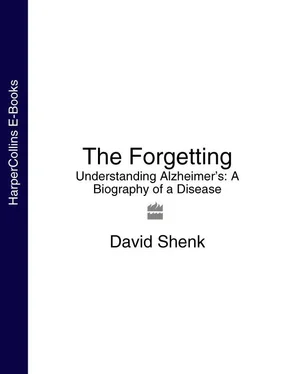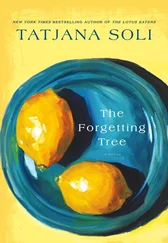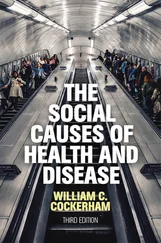The Roman poet Virgil wrote in the first century B.C., “Time wastes all things, the mind, too.” He was partly right. Scientists do not believe that Alzheimer’s is an inevitable consequence of aging. Many people will never get the disease regardless of how long they live. But aging is by far the greatest risk factor. It is almost unheard of in people aged 20–39, and very uncommon (about one in 2,500) for people aged 40–59. For people in their sixties, the odds begin to get more worrisome. An estimated and so on have Alzheimer’s or a closely related dementia. The risk accelerates with age, to the point where dementia affects nearly half of those eighty-five and over.
• 1 percent of 65-year-olds
• 2 percent of 68-year-olds
• 3 percent of 70-year-olds
• 6 percent of 73-year-olds
• 9 percent of 75-year-olds
• 13 percent of 77-year-olds
So, as the twentieth century came to a close, a shadow legacy was rapidly becoming apparent—the dark, unintended consequence of the century’s great advances in hygiene, nutrition, and medicine. Life spans in industrialized nations had nearly doubled over the previous one hundred years, and the percentage of elderly among the general population had more than tripled. In the process, the number of cases of senile dementia mushroomed. A hundred years before, it had not even been a statistical blip. Paradoxically, in the full blush of medical progress of the twentieth century, it had blossomed into a major public health problem.
Most strikingly to social workers like Judy and Irving, the number of people who had Alzheimer’s and who knew they had Alzheimer’s had exploded. A huge portion of the newly diagnosed cases were in the very early stages of the disease. “This is something new in the field,” Irving explained. “Most people never before realized that there is an early stage of Alzheimer’s. I had worked with the more advanced stages, but when I came into this it was overwhelming for me. It’s very hard to get used to a normal person who happens to have dementia. It’s a whole different ballgame.”
Judy and Irving recognized, along with many others in the national Alzheimer’s community, that something had to be done to help this emerging new constituency: early-stage dementia sufferers still functioning well enough to fully understand what lay ahead. With the assistance of the Alzheimer’s Association, they formed a support group at Freund House. “Our goal,” explained Irving, “is to try to help these people live a quality life, to help them gain some coping mechanisms for their deficits, and to help them feel better as human beings.” While scientists did battle with this disease, victims and their families had the opposite task: to make a certain peace with it, to struggle to understand the loss, come to terms with it, create meaning out of it.
Alzheimer’s is what doctors call a disease of “insidious onset,” by which they mean that it has no definitive starting point. The plaques and tangles proliferate so slowly—over decades, perhaps—and silently that their damage can be nearly impossible to detect until they have made considerable progress. Part of the function of any early-stage support group must be to try to make sense of this strange new terrain that lies between healthy and demented . Where, in specific behavioral terms, is the person overshadowed by the disease?
Individually and collectively, the Freund House group was trying to find out, and to make sense of the answer. “My wife gets frustrated with me,” Arnie related to his fellow group members, “and she is right to be frustrated. She asks me to put a can in the recycling … and I don’t do it. She says, ‘I know this is because of your illness, that this is not you.’”
Sadie nodded her head in recognition. “My mother had this, too,” she said. “Now I know what it was like for my father to take care of her. We used to get so mad at him when he would be short with her.”
Coping with a particular disability was one thing; trying to cope with an ever-shifting invisible illness, though, was a challenge unique to Alzheimer’s disease. In this early period, the insidiousness itself was often the most troubling thing about the disease—arguably even a disease unto itself As a group, these new patients could gain a more confident understanding of their disease, and tackle issues that would seem impossibly difficult to one isolated, failing person.
Driving, for instance. The first big question they confronted right after forming the group was: Should they continue, in this blurry period of semi-normalcy, to pilot massive steel boxes at thirty and forty and fifty miles per hour down roads lined with bicycles and toddlers? Studies showed conclusively that Alzheimer’s is, overall, a major driving hazard. Bystanders had been killed by Alzheimer’s patients making a lapse in judgment or being overcome momentarily by confusion. But the law had not yet caught up with this reality. Even with a diagnosis, no doctor or judge had ever confiscated a license. Families were forced to decide on their own when driving was no longer appropriate.
Together, after much deliberation, the group decided that it had already become too dangerous. Collectively, they gave up this highly charged symbol of autonomy and competence. On this shaky new terrain, a person’s independence could no longer be taken for granted.
In the summer of 1984, at the age of eighty-five, E. B. White, the tender essayist and author of Charlotte’s Web , became waylaid by some form of dementia. It came on very swiftly. In August, he began to complain of some mild disorientation. “We didn’t pay much attention,” recalls his stepson, Roger Angell, “because he was a world-class hypochondriac.” But just a few weeks later. White was severely confused much of the time. By the following May, he was bedridden with full-on dementia, running in and out of vivid hallucinations and telling visitors, “So many dreams—it’s hard to pick out the right one.” He died just a few months after that, in October 1985.
An obituary in the New York Times reported White as having Alzheimer’s disease, but that appeared to miss the mark. In fact, he was never even informally diagnosed with the disease, and his symptoms strongly suggested another illness. The rapid onset of the confusion and the abrupt shift from one stage to the next were classic signs of multi-infarct dementia, the second-most common cause (15 percent) of senile dementia after Alzheimer’s (60 percent). Multi-infarct dementia is caused by a series of tiny strokes. Its victims can have much in common with those of Alzheimer’s, but the experience is not as much of an enigma. Its cause is known, somewhat treatable, and, to a certain extent, preventable (diet, exercise, and medication can have an enormous impact on risk of strokes). Its jerky, stepwise approach is easier to follow and understand as symptoms worsen.
Alzheimer’s disease is not abrupt. It sets in so gradually that its beginning is imperceptible. Creeping diseases blur the boundaries in such a way that they can undermine our basic assumptions of illness. Alzheimer’s drifts from one stage to the next in a slow-motion haze. The disease is so gradual in its progression that it has come to be formally defined by that insidiousness. This is one of the disease’s primary clinical features, one key way that Alzheimer’s can be distinguished from other types of dementia: those caused by strokes, brain tumor, underactive thyroid, and vitamin deficiency or imbalance in electrolytes, glucose, or calcium (all treatable and potentially reversible conditions).
It is also nearly impossible to officially diagnose. A definitive determination requires evidence of both plaques and tangles—which cannot be obtained without drilling into the patient’s skull, snipping a tiny piece of brain tissue, and examining it under a microscope. Brain biopsies are today considered far too invasive for a patient who does not face imminent danger. Thus—Kafka would have enjoyed this—as a general rule, Alzheimer’s sufferers must die before they can be definitively diagnosed. Until autopsy, the formal diagnosis can only be “probable Alzheimer’s.”
Читать дальше












